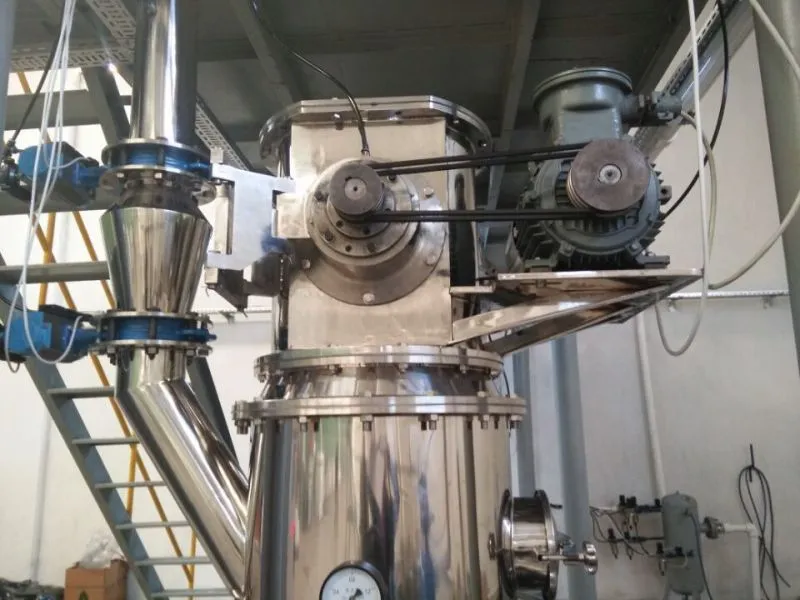The airflow pulverizer is an advanced milling machine. It uses high-velocity air streams to reduce the size of various materials efficiently. This tech allows fine grinding of powders with low heat. It’s ideal for heat-sensitive substances. The airflow pulverizer suspends particles in the air. It subjects them to intense centrifugal forces. This results in a uniform particle size distribution. The airflow pulverizer can handle many materials, including pharmaceuticals, chemicals, and food. So, it is gaining popularity in various industrial applications. Its energy efficiency and high throughput boost its appeal in modern manufacturing.
Jet pulverizers and ordinary pulverizers have significant differences in many aspects. These differences mainly show in five areas: efficiency, accuracy, wear, impact, and scope.

Crushing efficiency and precision
Air flow pulverizer: It uses a supersonic jet of air to crush materials in its chamber by impact, friction, and shear. Its crushing efficiency is 30%-40% better than ordinary crushers. The jet mill also has higher accuracy. Its product has a narrower particle size range. It has a smoother surface and a more regular shape.
An ordinary pulverizer uses high-speed rotating cutters or hammers. They apply impacts, shearing, and other forces to break materials into smaller particles. It can crush, but it is often less efficient than an airflow grinder.
Wear and tear
Airflow pulverizer: In the process, high-speed particles in the pulverizer collide less with the wall. So, it has less wear and tear. This lets the airflow pulverizer to perform well over time. It reduces costs of wear and tear.
Ordinary pulverizer: They use high-speed rotating knives or hammers to grind. So, they wear out quickly. This will shorten the pulverizer’s life and raise maintenance costs.
Environmental performance
Airflow pulverizer: It is a closed system that reduces dust during pulverizing. The airflow pulverizer does not use any media for pulverization. So, it causes no pollution. This aligns with sustainable development.
Ordinary pulverizer: It may generate more dust during pulverizing. Some models need media-assisted pulverization, which increases pollution risk.
Scope of application
Airflow pulverizer: It is widely used in industries like chemicals, minerals, and food. It has a strong demand due to its efficient, versatile pulverizing ability. An airflow pulverizer can pulverize heat-sensitive, low melting point, sugar-containing, and volatile materials. It does so without a medium and at low temps. This preserves the materials’ original properties.
Ordinary pulverizer: It can also be used to pulverize various materials. But, its scope of application is limited. Some materials, like heat-sensitive ones, have special properties. For them, ordinary pulverizers may not meet their pulverizing needs.
In summary, airflow pulverizers are better than ordinary ones. They excel in efficiency, precision, wear, eco-friendliness, and versatility. When choosing a pulverizer, consider the material properties, production needs, and environmental standards.
